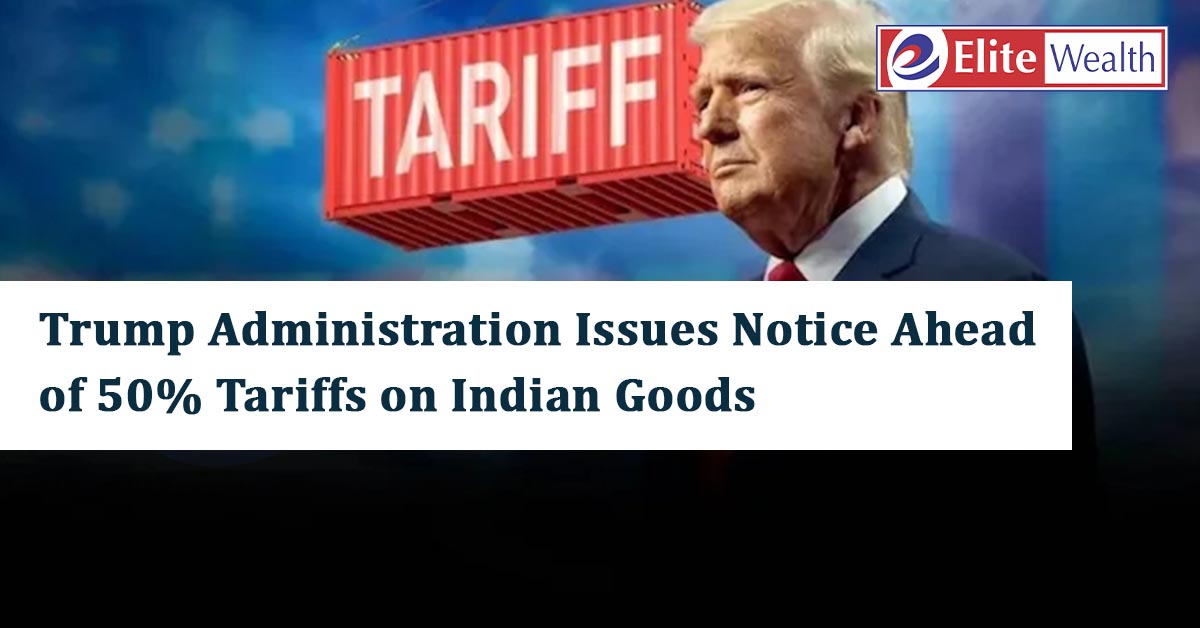
The Trump administration on Monday (local time) issued a formal notice outlining its plan to impose 50% tariffs on Indian goods, escalating trade tensions between the two countries. The move signals Washington’s determination to move forward with additional levies even as President Trump attempts to broker a peace deal between Russia and Ukraine.
According to a Bloomberg report, the U.S. Department of Homeland Security (DHS) released a draft notice stating that the new tariffs would apply to Indian products “entered for consumption, or withdrawn from warehouse for consumption, on or after 12:01 a.m. Eastern Daylight Time on August 27, 2025.”
Rising Trade Tensions Between U.S. and India
The tariff hike is part of the administration’s broader push to pressure India over its continued imports of Russian crude oil despite global sanctions. Washington has argued that India’s position undermines U.S.-led efforts to isolate Russia economically.
With the tariff rate doubling from 25% to 50%, Indian exporters could face a sharp decline in competitiveness in the U.S. market.
Potential Economic Impact
- India’s pharmaceuticals, textiles, and engineering goods are among the sectors most exposed to U.S. tariffs.
- The move could also affect bilateral trade ties, which reached $200 billion annually in recent years.
- Indian exporters may be forced to diversify markets or absorb higher costs, while U.S. importers could see higher prices for Indian goods.
Geopolitical Angle
The tariff escalation comes as President Trump positions himself as a mediator in the Russia–Ukraine conflict. Analysts believe the tariff notice may be used as a bargaining chip in wider negotiations, adding another layer of complexity to U.S.–India relations.
Summary
The Trump administration has issued a draft notice to impose 50% tariffs on Indian goods starting August 27, 2025, citing India’s continued imports of Russian crude oil. The move, confirmed by the Department of Homeland Security, is expected to impact key Indian export sectors and strain bilateral trade ties. With trade tensions rising, the tariffs also carry a geopolitical dimension, as President Trump attempts to link economic measures with his broader efforts to mediate the Russia–Ukraine conflict.
Disclaimer:
This article is intended solely for educational and informational purposes. The securities or companies mentioned are provided as examples and should not be considered as recommendations. Nothing contained herein constitutes personal financial advice or investment recommendations. Readers are advised to conduct their own research and consult a qualified financial advisor before making any investment decisions.
Investments in securities markets are subject to market risks. Please read all related documents carefully before investing.
